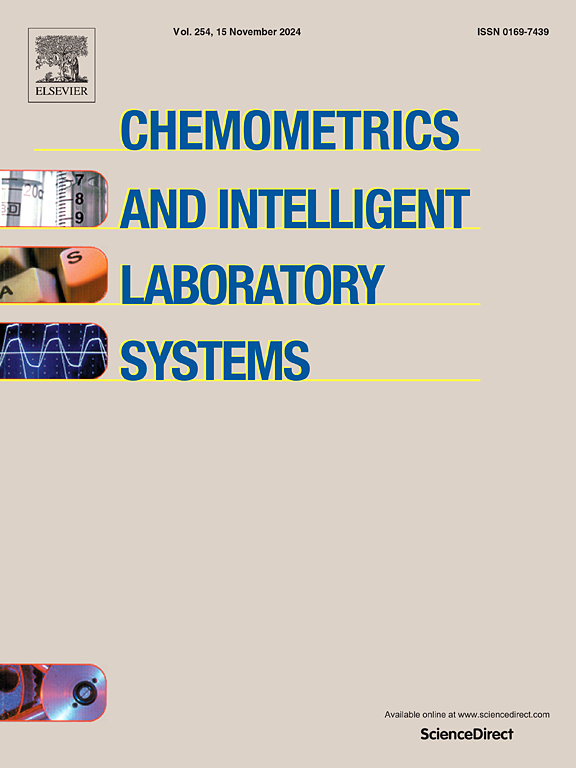A new segmentation-assisted interpolation method for creating maps in the study of artworks
IF 3.8
2区 化学
Q2 AUTOMATION & CONTROL SYSTEMS
Chemometrics and Intelligent Laboratory Systems
Pub Date : 2025-06-24
DOI:10.1016/j.chemolab.2025.105466
引用次数: 0
Abstract
The generation of spatial distribution maps of chemical elements and compounds has become a crucial technique in materials research, particularly in the analysis of artworks. However, data acquisition in this context is often limited by the low number of measured points relative to the visual complexity of the artwork. As a result, interpolation methods are employed to infer unmeasured data. The most widely used method, Minimum Hypercube Distance (MHD), although statistically validated, exhibits significant limitations, as demonstrated in this study. We identified errors of up to 100% in some cases, exposing the method’s vulnerability in regions lacking sufficient data. To address these challenges, we propose a novel segmentation-assisted interpolation method. By integrating semantic segmentation, this approach improves the accuracy and interpretability of the resulting maps, allowing for the precise identification of unmeasured areas and the expert-guided replication of data from similar regions. This new methodology enhances the robustness of artwork analysis, providing more reliable tools for the study and preservation of artworks and ancient monuments.
一种新的分割辅助插值方法在艺术品研究中创建地图
生成化学元素和化合物的空间分布图已经成为材料研究的一项关键技术,特别是在艺术品分析中。然而,在这种情况下的数据采集通常受到相对于艺术品视觉复杂性的低测量点数量的限制。因此,采用插值方法来推断未测量数据。最广泛使用的方法是最小超立方体距离(MHD),尽管在统计上得到了验证,但正如本研究所证明的那样,它具有显著的局限性。在某些情况下,我们发现了高达100%的错误,暴露了该方法在缺乏足够数据的地区的脆弱性。为了解决这些问题,我们提出了一种新的分割辅助插值方法。通过集成语义分割,该方法提高了结果地图的准确性和可解释性,允许精确识别未测量区域,并在专家指导下复制类似区域的数据。这种新方法增强了艺术品分析的稳健性,为艺术品和古迹的研究和保存提供了更可靠的工具。
本文章由计算机程序翻译,如有差异,请以英文原文为准。
求助全文
约1分钟内获得全文
求助全文
来源期刊
CiteScore
7.50
自引率
7.70%
发文量
169
审稿时长
3.4 months
期刊介绍:
Chemometrics and Intelligent Laboratory Systems publishes original research papers, short communications, reviews, tutorials and Original Software Publications reporting on development of novel statistical, mathematical, or computer techniques in Chemistry and related disciplines.
Chemometrics is the chemical discipline that uses mathematical and statistical methods to design or select optimal procedures and experiments, and to provide maximum chemical information by analysing chemical data.
The journal deals with the following topics:
1) Development of new statistical, mathematical and chemometrical methods for Chemistry and related fields (Environmental Chemistry, Biochemistry, Toxicology, System Biology, -Omics, etc.)
2) Novel applications of chemometrics to all branches of Chemistry and related fields (typical domains of interest are: process data analysis, experimental design, data mining, signal processing, supervised modelling, decision making, robust statistics, mixture analysis, multivariate calibration etc.) Routine applications of established chemometrical techniques will not be considered.
3) Development of new software that provides novel tools or truly advances the use of chemometrical methods.
4) Well characterized data sets to test performance for the new methods and software.
The journal complies with International Committee of Medical Journal Editors'' Uniform requirements for manuscripts.

 求助内容:
求助内容: 应助结果提醒方式:
应助结果提醒方式:


